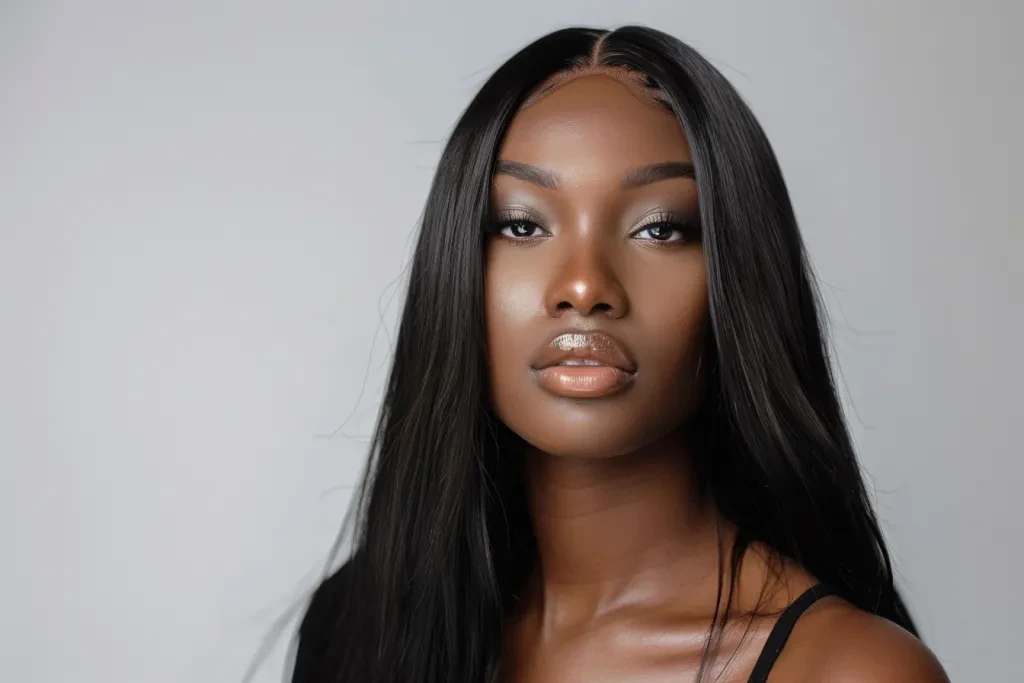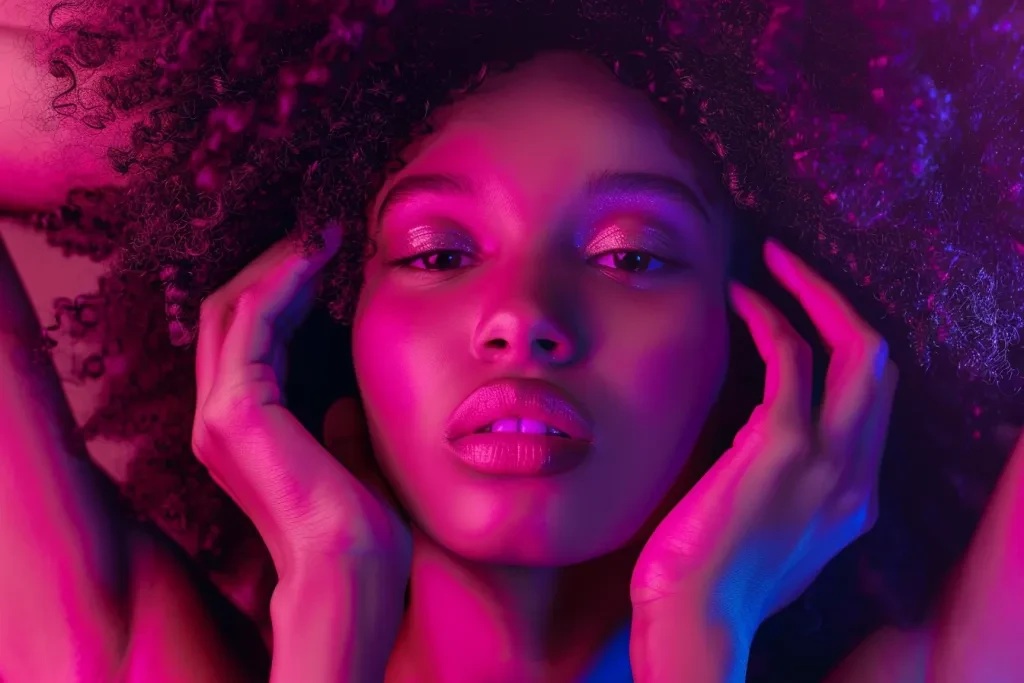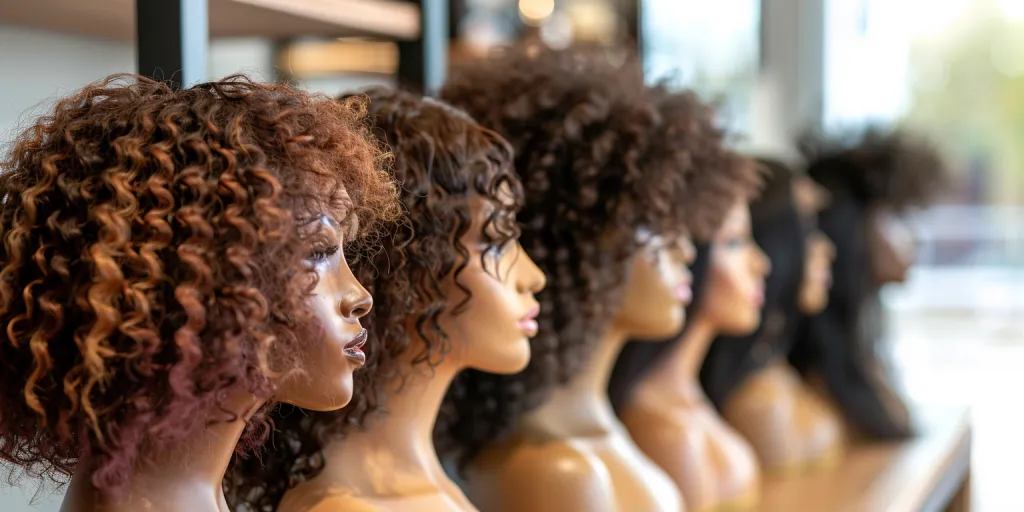As we step into 2025, the wig industry is experiencing unprecedented growth and transformation. With advancements in technology, changing fashion trends, and increasing demand for both synthetic and human hair wigs, the market is poised for significant expansion. This article delves into the current market scenario, highlighting key trends, growth drivers, and the competitive landscape of the wig industry.
Table of Contents:
– Market Overview
– The Rise of Customization in Wigs
– The Influence of Social Media on Wig Trends
– Innovations in Wig Design and Materials
– Final Thoughts on Wig Market Trends
Market Overview

Market Size and Growth
The global hair wigs and extensions market is on a robust growth trajectory. According to a report by Research and Markets, the market is forecasted to grow by USD 7.06 billion during 2023-2028, accelerating at a compound annual growth rate (CAGR) of 10.15% during the forecast period. This growth is driven by several factors, including technological advances in the production and design of synthetic hair wigs, the rising demand for hair goods as fashion accessories, and the increasing popularity of premium human hair products.
Key Market Segments
The wig market is segmented by distribution channel, product type, and geography. By distribution channel, the market is divided into offline and online segments. The online segment is gaining traction due to the convenience and variety it offers to consumers. By product type, the market is categorized into human hair wigs and extensions and synthetic hair wigs and extensions. Human hair wigs are highly sought after for their natural look and feel, while synthetic wigs are popular for their affordability and low maintenance.
Geographically, the market is segmented into regions such as Asia-Pacific (APAC), North America, the Middle East and Africa, Europe, and South America. Each region presents unique opportunities and challenges for market players. For instance, the Europe hair wig market is expected to grow from USD 1,087.06 million in 2022 to USD 1,482.54 million by 2030, driven by the rising incidence of hair loss among patients undergoing cancer treatment and the increasing awareness of wigs as a viable solution.
Influential Market Drivers
Several key drivers are propelling the growth of the wig market. Technological advancements in the production and design of synthetic hair wigs have made them more realistic and comfortable, attracting a broader consumer base. The growing prominence of celebrity and social media influencers is also playing a significant role in driving market growth. Influencers often showcase various wig styles and brands, encouraging their followers to experiment with different looks.
Additionally, the rising demand for premium human hair goods is contributing to market expansion. Consumers are increasingly willing to invest in high-quality wigs that offer a natural appearance and durability. The shift towards omnichannel retail is another important trend, with many vendors enhancing their online presence to reach a wider audience.
Competitive Landscape
The wig market is highly competitive, with numerous vendors vying for market share. Some of the leading players in the industry include Aderans Co. Ltd., Artnature Inc., Cha Cha Hair Products Ltd., Diva Divine Hair Extensions and Wigs, Donna Bella OpCo LLC, Evergreen Products Group Ltd., F.N. Longlocks, Godrej and Boyce Manufacturing Co. Ltd., Great Lengths Universal Hair Extensions Srl, Hair Visions International, Hairdreams Haarhandels GmbH, Hairlocs, India Hair International, Indique Hair LLC, Klix Hair Inc., Locks and Bonds, Racoon International Ltd., SalonLabs Exports India Pvt. Ltd., Shake N Go Inc., and Shandong Elite Hair Products Co. Ltd.
These companies are continuously innovating and expanding their product offerings to cater to the evolving needs of consumers. For instance, many vendors are focusing on improving the quality and comfort of their wigs, ensuring that they are lightweight, breathable, and easy to wear. The competitive landscape is also characterized by strategic partnerships, mergers, and acquisitions, as companies seek to strengthen their market position and expand their global footprint.
In conclusion, the wig market in 2025 is marked by dynamic growth and innovation. With technological advancements, changing consumer preferences, and a competitive landscape, the industry is set to witness significant developments in the coming years. Business buyers, including retailers and wholesalers, should stay abreast of these trends to capitalize on the burgeoning opportunities in the wig market.
The Rise of Customization in Wigs

In 2025, the wig market is experiencing a significant shift towards customization, driven by the increasing demand for personalized beauty solutions. According to a professional report, the U.S. hair wigs and extensions market is expected to grow at a CAGR of 14.69% from 2023 to 2029, highlighting the growing popularity of wigs among consumers. This trend is particularly evident in the rise of AI-powered custom wig fittings, as seen with U.S.-based Parfait, which uses advanced technology to provide personalized wig solutions. This approach not only enhances the customer experience but also ensures a perfect fit, catering to the unique needs of each individual.
Tailored to Perfection
The demand for customized wigs is fueled by the desire for a natural look and feel. Brands like UniWigs Inc. are leading the way by offering a wide range of options, including natural hair wigs, synthetic wigs, and personalized designs. These wigs are crafted to match the specific preferences of customers, from hair color and texture to length and style. This level of customization allows consumers to achieve their desired look with ease, boosting their confidence and satisfaction.
Advanced Technology Integration
The integration of advanced technology in the wig industry is revolutionizing the way wigs are designed and fitted. AI-powered tools and 3D printing are being used to create wigs that perfectly match the contours of the wearer’s head. This not only ensures a comfortable fit but also enhances the overall appearance of the wig. For instance, the AI-based molecule discovery tool used by biotechnology beauty brand Revela has led to the development of new ingredients that promote hair growth, further enhancing the quality of wigs.
Enhancing the Customer Experience
Brands are also focusing on enhancing the customer experience by offering virtual consultations and try-on services. This allows customers to visualize how different wigs will look on them before making a purchase. Companies like Jon Renau are leveraging virtual reality and augmented reality technologies to provide an immersive shopping experience. This not only helps customers make informed decisions but also reduces the likelihood of returns, thereby increasing customer satisfaction and loyalty.
The Influence of Social Media on Wig Trends

Social media platforms have become a powerful tool for promoting and selling wigs, with influencers and hairstylists playing a crucial role in shaping consumer preferences. According to a report, the South & Central America hair wig market is expected to grow significantly due to the increased promotion of hair wigs on social media. Platforms like Instagram, Facebook, and YouTube are being used to showcase hair transformations and promote wig brands, reaching a wider audience and driving sales.
Influencer Marketing
Influencer marketing has become a key strategy for wig brands, with influencers showcasing their hair transformations and endorsing products. This not only helps in building brand awareness but also influences consumer purchasing decisions. For instance, Secret Hair has grown its customer base by leveraging influencer marketing on Instagram, using appropriate hashtags to reach the desired audience. This approach has proven to be highly effective in driving sales and increasing brand visibility.
User-Generated Content
User-generated content is another powerful tool for promoting wigs on social media. Customers often share their experiences and post pictures or videos of themselves wearing wigs, providing authentic reviews and recommendations. This not only helps in building trust but also encourages potential customers to make a purchase. Brands like Luvmehair South Africa have successfully utilized user-generated content to showcase their products and engage with their audience, resulting in increased sales and customer loyalty.
Virtual Try-Ons
Virtual try-ons have become increasingly popular on social media platforms, allowing customers to see how different wigs will look on them before making a purchase. This feature is particularly useful for those who are new to wearing wigs and want to experiment with different styles and colors. Brands like UniWigs Inc. offer virtual try-on services on their websites and social media platforms, providing a convenient and interactive shopping experience for their customers.
Innovations in Wig Design and Materials

The wig industry is witnessing a wave of innovations in design and materials, aimed at enhancing the quality and comfort of wigs. According to a report, the Europe hair wig market is expected to grow at a CAGR of 4.0% from 2022 to 2030, driven by advancements in wig design and materials. These innovations are not only improving the aesthetics of wigs but also making them more comfortable and durable.
Lightweight and Breathable Materials
One of the key innovations in wig design is the use of lightweight and breathable materials. This ensures that wigs are comfortable to wear for extended periods, without causing any discomfort or irritation. Brands like HairUWear Inc. are using advanced materials that mimic the natural look and feel of human hair, while also being lightweight and breathable. This makes wigs suitable for everyday wear, providing a seamless and natural look.
Heat-Resistant and Durable Fibers
Heat-resistant and durable fibers are another significant innovation in the wig industry. These fibers allow customers to style their wigs using heat tools, such as curling irons and straighteners, without damaging the wig. This provides greater flexibility and versatility, allowing customers to achieve different looks with the same wig. Brands like Indique Hair LLC are using high-quality, heat-resistant fibers in their wigs, ensuring durability and longevity.
Scalp-Friendly Designs
Scalp-friendly designs are becoming increasingly important in the wig industry, particularly for customers with sensitive scalps or those undergoing medical treatments. Brands are focusing on creating wigs that are gentle on the scalp, using hypoallergenic materials and seamless construction techniques. This ensures that wigs are comfortable to wear and do not cause any irritation or discomfort. Companies like Lordhair Co Ltd are leading the way in creating scalp-friendly wigs, providing a comfortable and natural solution for customers.
Final Thoughts on Wig Market Trends

The wig market in 2025 is characterized by a strong focus on customization, social media influence, and innovative designs and materials. Brands are leveraging advanced technology and social media platforms to enhance the customer experience and drive sales. With the growing demand for personalized beauty solutions and the continuous advancements in wig design, the future of the wig market looks promising.





 বাংলা
বাংলা Nederlands
Nederlands English
English Français
Français Deutsch
Deutsch हिन्दी
हिन्दी Bahasa Indonesia
Bahasa Indonesia Italiano
Italiano 日本語
日本語 한국어
한국어 Bahasa Melayu
Bahasa Melayu മലയാളം
മലയാളം پښتو
پښتو فارسی
فارسی Polski
Polski Português
Português Русский
Русский Español
Español Kiswahili
Kiswahili ไทย
ไทย Türkçe
Türkçe اردو
اردو Tiếng Việt
Tiếng Việt isiXhosa
isiXhosa Zulu
Zulu